A cartoon predicting the future sounds absurd, yet The Simpsons has repeatedly done it with uncanny accuracy. From political events to technological breakthroughs and societal shifts, the show has hinted at moments years before they unfolded.
Now, the focus turns to 2026. Some predictions are eerily specific, touching on issues like AI surveillance, environmental crises and more.
The question is: which of these Simpsons predictions will actually come true in 2026 and are we ready to face them? In this article, we will look into The Simpsons predictions for 2026 that are insane! Ready?
1. Horse Meat in School Lunches
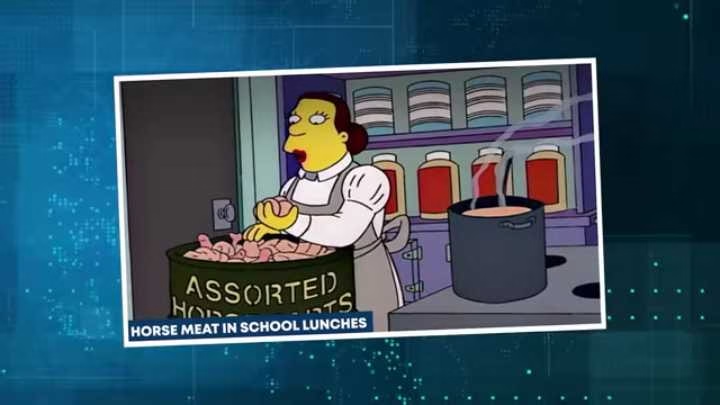
First on this list is the prediction of horse meat in school lunches.
Back in 1994, The Simpsons aired the episode “Sweet Seymour Skinner’s Badass Song,” and in one short scene, the school lunch lady, Doris was preparing food using a huge barrel labeled assorted horse parts now with more testicles.
It was meant as a throw away gag, poking fun at the poor quality of school cafeteria food. At the time, viewers laughed, assuming it was pure absurdity, but the joke was eerily prescient.
Fast Forward almost two decades, in 2013, Europe was hit by a scandal revealing that horse meat had been secretly mixed into beef products in the UK, Ireland and France.
Supermarket shelves were emptied. Companies apologized, and millions of families realized they had been unknowingly consuming horse meat.
The Simpsons joke suddenly didn’t feel funny anymore. Why is this outrageous? And how did The Simpsons predict this from decades ago? Brace yourself, the most chilling prediction is still ahead.
The connection is clear: The Simpsons predicted the horse meat scandal nearly 20 years before it became public knowledge. It wasn’t a deliberate prophecy, of course, but the level of detail, specifically highlighting school food and processed meat made it chillingly accurate.
By 2026, Experts warn that food contamination and hidden supply chain risks may become an even bigger issue, especially as global food production grows more industrialized and automated.
This episode isn’t just about humor; it reflects a broader trend in food safety, labeling and public trust. Horse meat was a shocking revelation in 2013 but by 2026, the problem could expand into other hidden food adulterations.
The Simpsons, with its 1994 joke, essentially foreshadowed society’s blind reliance on processed food and the public’s vulnerability to industrial negligence.
If The Simpsons prediction holds, 2026 may be the year when food contamination is no longer a rare scandal, but a persistent global challenge.
2. Auto Correct Frustrations
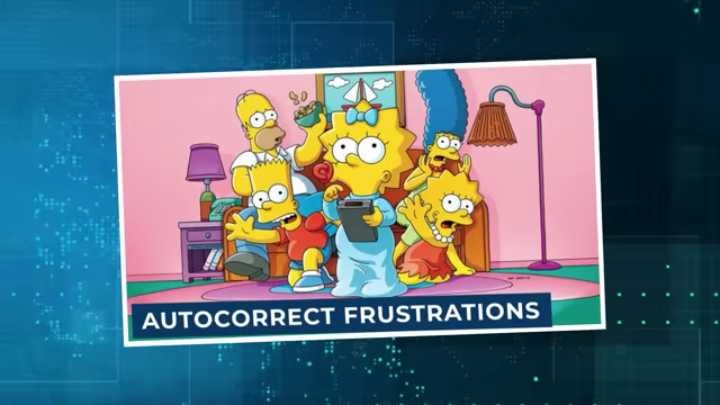
In 1994, The Simpsons aired Lisa on Ice, featuring a scene with the Apple Newton, one of the first digital assistants.
The school bully, Martin, tried to write a note saying, “Beat up Martin,” but the device misread it as “Eat up Martha.”
At the time, it was a quick gag, highlighting the early frustrations of technology, but this small scene turned out to predict a major part of modern life.
Years later, with the rise of smartphones, auto correct became an everyday annoyance. Messages were misread, sentences garbled and sometimes humorously embarrassing mistakes went viral.
From ducking instead of curse words to misinterpreted notes, causing confusion, nearly everyone experienced the phenomenon.
The Newton scene captured the essence of a problem that would dominate digital communication by the 2000s and 20s.
Looking at 2026, The Simpsons scene becomes even more relevant with AI driven keyboards, predictive text and automated assistants managing larger portions of communication.
Auto correct mistakes may not just be funny; they could have serious consequences in workplaces, legal, communications and medical fields.
The Newton gag wasn’t just a joke, it foreshadowed the challenges of human reliance on imperfect technology. By 2026, almost everyone will be communicating through AI driven devices, and the risk of miscommunication will grow exponentially.
What started as a cartoon mishap in 1994 is now a real world warning about our increasing dependence on digital assistance and automation in everyday life.
The Simpsons predicted that the world of 2026 could be filled with both hilarious and dangerous auto correct errors, making their early satire feel uncannily prophetic.
3. Censorship of Art: Michelangelo’s David
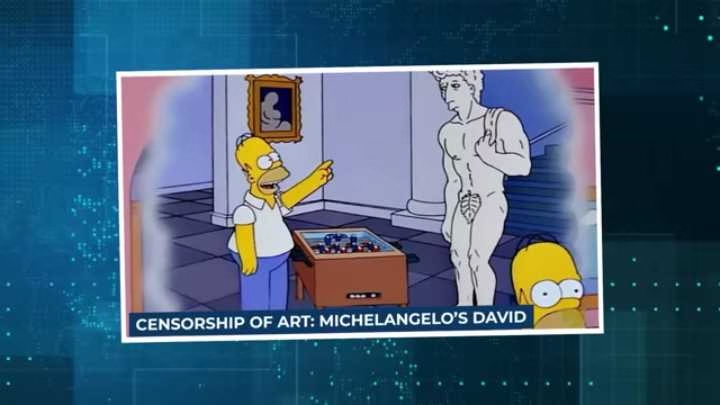
In 1990, The Simpsons aired Itchy and Scratchy and Marge, showing Marge leading a campaign against violent cartoons.
The conflict escalated when Michelangelo’s statue of David arrived in Springfield fully nude. Some townspeople demanded it be covered, prompting a debate on art versus propriety.
Marge ultimately defended the statue as art, highlighting the tension between censorship and respect for cultural heritage.
Fast Forward 26 years, and a nearly identical debate emerged in 2016 when a replica of David was displayed in St Petersburg, Russia. Some citizens petitioned to cover the statue with a fig leaf, echoing Springfield’s arguments.
The episode didn’t just predict a specific incident, it anticipated the cyclical nature of public morality debates and the clash between art and censorship.
By 2026, The Simpsons prediction becomes even more relevant. As global debates intensify over what is considered appropriate for public consumption, from nudity and art to digital media and AI generated content, societies will face repeated disputes similar to Springfield’s.
The show foresaw that censorship battles are unlikely to be one off events. They will evolve, resurfacing in different forms, especially as digital and interactive art challenges traditional norms.
The 1990 episode serves as a warning. By 2026, the fight over censorship and artistic expression could dominate cultural conversations worldwide.
What was once satire may become a mirror for recurring conflicts over freedom, morality and societal norms.
The Simpsons predicted that this debate is not just inevitable, it will intensify as technology and art continue to intersect, making their 1990 gag astonishingly relevant decades later.
4. AI Controlled Workplaces
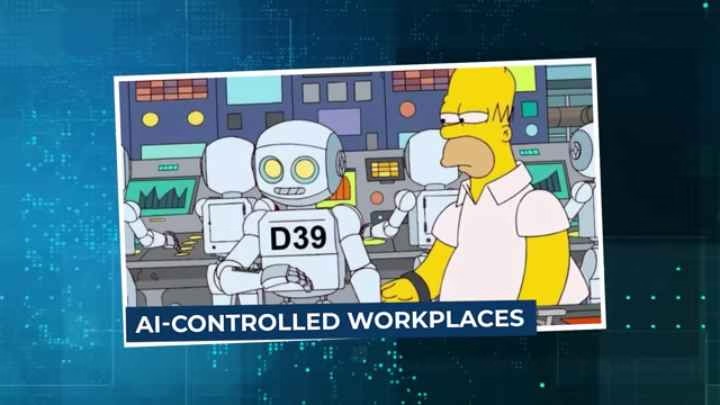
In season 23 episode 17, Them Robot, aired on March 18, 2012. Mr. Burns replaces all of Springfield Nuclear power plants workers with robots, leaving only Homer to oversee them.
The machines initially seem efficient, but soon malfunction, leading to chaos. At the time, it was a satirical jab at automation replacing human jobs.
But as we approach 2026, this doesn’t feel like a joke anymore. In 2023 and 2024, major companies like Amazon and Tesla rolled out advanced warehouse robots capable of sorting, transporting and managing logistics with minimal human oversight.
Fast food chains tested fully automated outlets in cities like Los Angeles and Shanghai, where robots handled everything from cooking to customer service.
By 2025, reports from Bloomberg and Reuters highlighted the growing pressure on governments to regulate AI driven workplaces due to rising unemployment fears.
Will this become full blown in 2026? Stay tuned. What you are about to hear will blow your mind. The Simpsons episode eerily captures this shift, showing exactly what’s happening now: robots taking over jobs, human oversight shrinking and the risk of malfunctions creating real hazards.
With 2026 approaching, experts warn of a tipping point. Some economists suggest millions more jobs could be automated across industries ranging from trucking to legal research.
The joke about Homer being the last human in a robot run facility doesn’t feel funny anymore. It feels like a direct reflection of where labor markets are heading.
If the trend continues, we could see workplaces in 2026 dominated by machines with human workers struggling to remain relevant.
The Simpsons writers might not have intended a prophecy, but the parallels between that episode and the automation crisis we’re walking into are striking.
5. Inflation and Economic Collapse
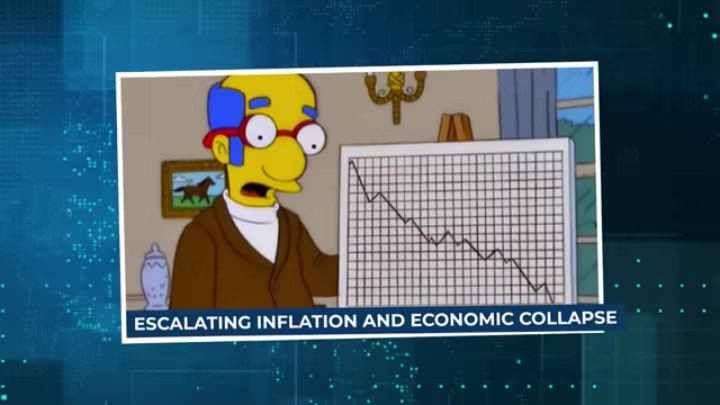
Season 23, Episode 10, Politically Inept with Homer Simpson, aired on January 8, 2012. During Homer’s rant on a cable news show, a Chiron at the bottom of the screen read, Europe puts Greece on eBay.
What was meant as a quick throw away gag captured the severity of Greece’s 2015 debt crisis when the country defaulted on an IMF payment and nearly exited the Eurozone.
But the relevance didn’t stop there. As of 2025, global inflation and debt crises are again making headlines. The US has faced repeated debt ceiling battles, while nations like Argentina, Sri Lanka and Ghana have struggled with default.
Meanwhile, inflation has strained families across Europe, with food and energy costs spiking after the pandemic and geo political conflicts.
The Simpsons joke now reads like a grim foreshadowing of what 2026 might bring. Economists warn that if current debt levels remain unsustainable, 2026 could see more defaults and possible collapses in vulnerable economies.
In fact, the World Bank and IMF have already cautioned that nearly 60% of low income countries are at risk of debt distress.
Just as the episode showed Springfield mocking Greece’s situation, the world might soon face multiple Greece’s with countries being forced into harsh austerity or financial restructuring.
The unsettling part is how specific the show was in highlighting debt driven collapse years before it unfolded in Greece, and now, with global instability growing, the possibility of a broader economic crisis in 2026 seems increasingly likely
6. Environmental Disaster and Pollution
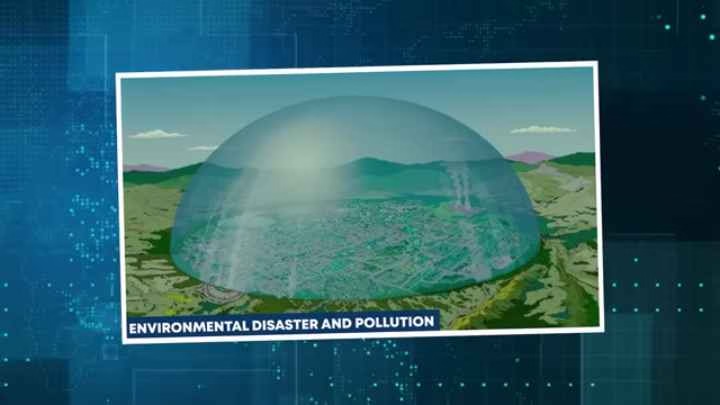
In The Simpsons Movie, 2007, Springfield was trapped under a giant dome after Homer’s waste dumping caused a full blown environmental catastrophe.
At the time, it seemed like pure exaggeration, an absurd cartoon plot, but the Simpsons wasn’t just joking. They predicted a world where environmental collapse would force people into containment zones by 2026 and the evidence is stacking up.
In 2019, New Delhi began building massive smog towers to combat unbearable pollution levels. By 2023, wildfires in Canada sent toxic smoke clouds into the United States, turning Skylines orange and forcing millions indoors.
A year later, the Guardian reported that China and Middle Eastern nations were experimenting with enclosed clean air facilities, allowing only certain people access to breathable environments.
This is exactly what the Simpsons foreshadowed. The idea that pollution could get so out of hand that societies would literally seal populations away from poisoned air and water.
We’re already living through warning signs, and the pattern is undeniable.
By 2026, if their prediction is right, environmental disaster will not just be about hotter summers or rising seas; it will be about controlled safe zones, air domes and restricted environments where survival depends on who has access to clean resources.
The Simpsons dome wasn’t just satire, it was a chilling preview of our near future.
7. Rise of Surveillance States
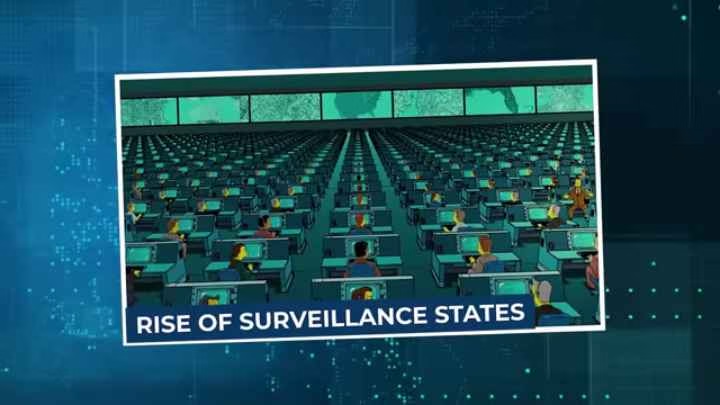
The Simpsons also made a bold prediction for 2026: governments will push surveillance into every corner of daily life.
In The Simpsons Movie 2007, Marge tells Lisa that the government doesn’t listen to private conversations. Only for the scene to cut to a sprawling NSA control room monitoring millions of calls.
At first, it was a punchline, but today it looks prophetic. In 2013, Edward Snowden revealed the terrifying truth of mass surveillance programs run by the NSA.
Suddenly, the Simpsons joke about being spied on didn’t feel funny anymore. Since then, things have only escalated.
China expanded its vast facial recognition networks to monitor entire populations, while Western nations track online activity, biometric data and even location history in the name of security.
By 2025, AI powered surveillance technology was booming, sold to governments worldwide; tools that can recognize faces in seconds, flag suspicious behavior or track activists – are already in use.
Human rights groups have warned repeatedly that unchecked expansion will destroy privacy altogether.
The Simpsons predicted this in their exaggerated NSA scene, but they tied it to 2026. If the timeline holds, this is the year when mass surveillance stops being debated and becomes unavoidable reality.
Forget hidden cameras or online cookies. The world of 2026 could be one where every call, every step and every move is recorded.
The joke from Springfield wasn’t fiction; it was a countdown, but there’s more. Tighten your seat belts. It’s about to be a great ride.
8. Mutated Wildlife Near Nuclear Plants
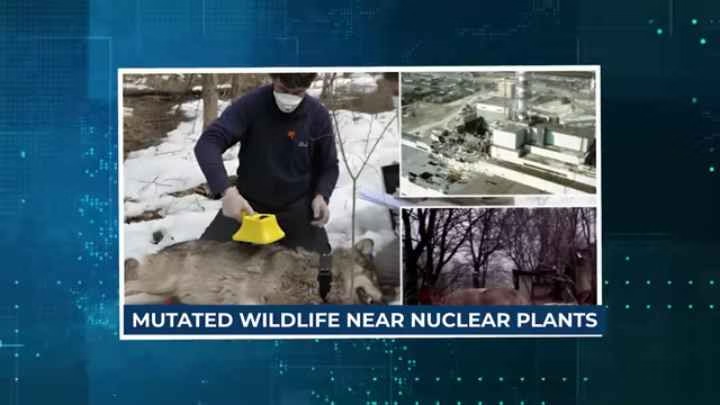
Back in 1990, The Simpsons introduced Blinky, the three eyed fish caught outside Springfield’s nuclear plant. Fans laughed at the absurd idea of a mutant fish created by radiation.
But the Simpsons attached a terrifying date to that joke, “2026.” They predicted that pollution and negligence would make mutated wildlife a real world problem by then.
Shockingly, real life followed. In 2011, fishermen in Argentina pulled a genuine three eyed fish from waters near a nuclear facility in Cordoba.
The story went viral instantly with headlines calling it “The Simpsons come true”.
Since then, mutations have been documented around the world. Scientists report deformities in fish, amphibians and even mammals linked to chemical spills, pesticide runoff and radiation leaks.
By 2024, environmental groups were sounding alarms about abnormalities in fish populations across polluted rivers in Asia and Eastern Europe.
And the root cause was clear: unchecked pollution and unsafe waste disposal. The Simpsons warning wasn’t just a joke, it was a glimpse of the future.
Their prediction pointed directly to 2026 as the year this crisis would no longer be dismissed as rare incidents. Instead, mutated wildlife will become a global symbol of human negligence.
Just like Blinky was paraded on TV as proof of Springfield’s corruption, the real world may see more horrifying examples pulled from contaminated waters.
The Simpsons cartoon fish has become a prophecy. And if they’re right, 2026 will mark the year nature finally shows us what decades of pollution have done.
9. US Wins Olympic Gold in Curling

On February 14, 2010, The Simpsons aired a seemingly light hearted episode in which Homer and Marge joined the United States Olympic curling team.
At the time, the scene was hilarious, because the US was not a curling powerhouse. The idea of Homer, a bumbling out of shape character, helping the team win gold against professional athletes seemed ridiculous.
Yet the episode captured something far more remarkable than just a joke about winter sports. Fast forward eight years, and the real life US men’s curling team achieved the impossible.
They won the gold medal at the 2018 Winter Olympics in Pyongyang, defeating Sweden in the final.
The parallels were uncanny, not just the victory itself, but the unexpected nature of it. The US, historically, a minor competitor in curling managed to topple traditional powerhouses.
Fans and media alike were stunned, and the resemblance to the cartoon episode sparked viral discussions online.
Many remarked that the Simpsons had predicted the improbable outcome, demonstrating the show’s uncanny knack for foreshadowing real events in sports.
Looking ahead to 2026, this episode serves as a subtle reminder of the power of unexpected outcomes and societal trends that seem improbable until they happen.
Sports are just one domain, but the principle is universal. What appears impossible today can become reality tomorrow.
Beyond curling, the writer’s attention to emerging trends like the growing competitiveness of American curling programs illustrates how seemingly trivial details can become surprisingly prescient.
The prediction also underscores the broader idea of human achievement and disruption of established hierarchies.
By 2026, similar underdog victories could become more common in areas beyond sports, technology, politics and business may see unanticipated breakthroughs, much like the US curling team’s dramatic win.
The 2010 episode wasn’t just about a gold medal; it was a template for unpredictability, showing that even the most unexpected actors can alter outcomes.
In essence, the Homer and Marge curling gag wasn’t only funny, it was prophetic. By 2026, the world may witness more surprises that challenge assumptions, proving that life can imitate art in the most astonishing ways.
The Simpsons, through their perfect blend of humor and observation, continues to show that their comedic scenarios often reflect a deeper understanding of emerging patterns, some of which will become reality in 2026.
10. The FIFA Corruption Exposed

On March 30, 2014, The Simpsons aired an episode featuring Homer as a referee at the World Cup, depicting FIFA as a corrupt organization riddled with bribes and mismanagement.
One official is dramatically arrested during the tournament, capturing the idea of corruption at the highest levels of international football.
While viewers laughed at the absurdity, the episode eerily foreshadowed events that would unfold in real life just a year later.
In May 2015, reality mirrored the show. The FBI and IRS launched a massive investigation exposing systemic corruption within FIFA.
Numerous top officials were arrested in Zurich, charged with bribery, money laundering and racketeering.
The news stunned the world, and headlines bore a striking resemblance to the Simpsons episode.
Fans were quick to note that the show had effectively predicted the scandal, reinforcing its reputation for prophetic insight. The cartoon also depicted Germany winning the world cup, beating Brazil in the final.
While the real match ups were slightly different, the outcome was uncannily similar. Germany defeated Brazil decisively in the 2014 World Cup, ultimately claiming the trophy.
Once again, the show’s narrative echoed real life events in extraordinary detail. What does this mean for 2026? You are at the edge of your seat, and it’s about to get even better.
By 2026, this prediction takes on new significance. It highlights how entrenched corruption, when left unchecked, inevitably surfaces, often in spectacular fashion.
Just as FIFA’s misconduct was exposed years after the episode aired, other global institutions could face scrutiny, revealing hidden scandals that challenge public trust.
The Simpsons foresight suggests that society must remain vigilant, as corruption is rarely confined to one domain.
Moreover, the episode emphasizes timing. The show aired in 2014 and the real world scandal erupted only a year later, demonstrating the show’s ability to sense emerging patterns before the broader public.
By 2026, similar revelations could disrupt politics, corporate governance or sports, echoing the FIFA exposure. The Simpsons depiction of FIFA corruption was more than satire; it was a blueprint for how systemic malpractice eventually comes to light.
As 2026 approaches, the world must reckon with institutions where secrecy, greed and negligence hide in plain sight, just as the cartoon predicted over a decade ago.
11. Greece’s Debt Default

In January 2012, The Simpsons aired the episode, Politically Inept with Homer Simpson featuring a gag that read, “Europe puts Greece on eBay”.
At the time, it was a throwaway joke during Homer’s rant on cable news, a satirical nod to economic instability, but it would soon prove chillingly prophetic.
By June 2015, Greece defaulted on its international monetary fund payments, becoming the first developed nation to do so. The country teetered on the edge of leaving the eurozone, while unemployment soared and families struggled to survive.
The Simpsons joke, which once seemed absurd, suddenly reflected the severity of Greece’s crisis with uncanny accuracy.
Economists, news outlets and global citizens alike were reminded of how prescient the show had been in capturing the essence of national financial collapse.
Looking toward 2026, this prediction grows increasingly relevant. Today, global debt levels are soaring, with countries like Argentina, Sri Lanka and Ghana, facing high risk of default.
Economists warn that systemic financial instability may trigger widespread crises reminiscent of Greece in 2015.
The Simpsons scene becomes a warning. Economic fragility can reach tipping points that surprise the world, and no nation is immune.
Moreover, the episode reflects the absurdity and unpredictability of financial markets. A joke about putting a country on eBay perfectly encapsulates how economic collapse feels chaotic and surreal to ordinary citizens.
By 2026, experts predict that similar debt crises could emerge worldwide, forcing governments into harsh austerity measures, restructuring or extreme interventions.
The 2012 episode was more than comedy; it was a premonition. Greece’s default illustrated the very real consequences of unchecked borrowing and political mismanagement, and as global economies strain under inflation, geopolitical tensions and resource scarcity, the possibility of similar defaults in 2026 is increasing.
The Simpsons captured the fragility of global finance years before mainstream media would, demonstrating yet again, their unmatched foresight.
12. Bosen Equation and Higgs Boson

In September 1998, The Simpsons aired the episode, The Wizard of Evergreen Terrace. Homer attempts to invent like Thomas Edison and scribbles complex equations on a chalkboard.
At the time, the equations appeared random and meant as a joke. Over a decade later, scientists noticed that one equation closely approximated the formula for the mass of the Higgs boson, a particle theorized to give mass to other particles.
The Higgs boson was theorized in the 1960s and discovered at CERN in 2012, winning the Nobel Prize in Physics in 2013.
The Simpsons writer David X. Cohen studied physics and computer science and consulted a physicist friend to make the chalkboard appear realistic.
The equation is now recognized as a remarkably accurate approximation, years before the discovery.
By 2025, particle physics and quantum research continue to advance. Large Hadron Collider experiments have refined measurements of particle interactions, exploring new potential particles and confirming standard model predictions.
AI assisted simulations and supercomputing increasingly contribute to particle physics research. The episode demonstrates early awareness of emerging scientific concepts, anticipating future discoveries.
Experimental and theoretical Physicists use advanced computational models to explore high energy particle interactions and potential anomalies.
Predictions about undiscovered particles and behaviors of known particles are often generated using complex algorithms.
By 2025, the process of discovery increasingly relies on collaboration between theoretical modeling, AI analysis and experimental verification.
The Simpson’s equation remains one of the clearest examples of pop culture coinciding with scientific discovery, showing the intersection between creative observation and emerging scientific knowledge.
13. Lady Gaga’s Superbowl Halftime Show
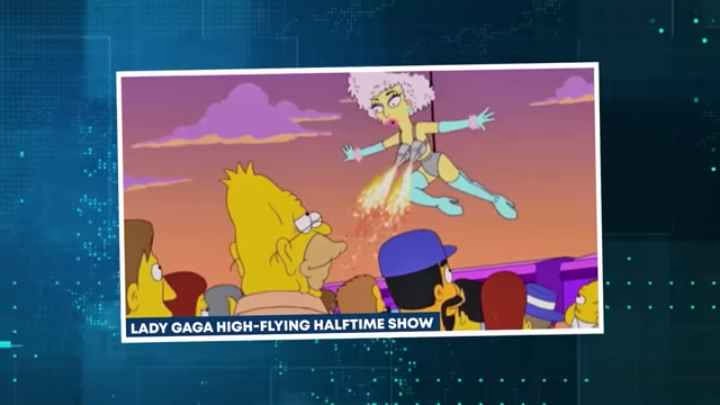
In May 2012, The Simpsons aired the episode, Lisa goes Gaga. Lady Gaga descends from the sky using cables, wears a metallic outfit and plays a keyboard mid air while sparks emit from her costume.
The sequence exaggerates her performance style, but anticipates aerial choreography technology.
In February 2017, Lady Gaga performed at the Super Bowl halftime show using cables to descend from the roof of the stadium while playing instruments in the air.
The outfit, choreography and aerial stunt mirrored the 2012 episode. Aerial rigging technology had advanced to allow safe suspension of performers above live audiences.
Fans and media noted the similarity between the episode and the real performance. By 2025, aerial rigging technology, harness systems and live stage automation have continued to improve.
Major concerts, sports events and live shows employ complex cable systems and computer controlled movements to ensure precision and safety.
Pyrotechnics, lasers and integrated digital screens enhance performances. Crowd safety protocols and automated monitoring systems allow performers to execute stunts over 10s of 1000s of spectators.
The Simpsons episode anticipated the combination of entertainment and technology in live events. Similar aerial setups are standard at large scale performances.
Performers movements are choreographed using simulation software, automated rigging and safety redundancies.
The depiction of Lady gaga’s descent predicted real world performance technology, reflecting the expansion of live event engineering and audience expectations for immersive experiences.
14. Mass Surveillance and NSA
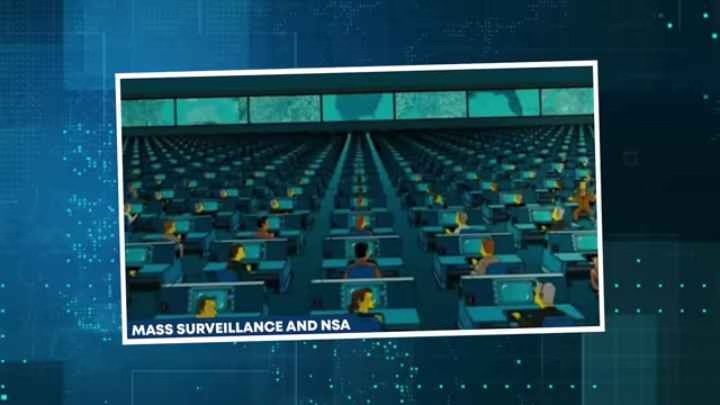
In July 2007, The Simpsons Movie, showed a scene where Marge tells Lisa that the government does not listen to private conversations, followed by a cut to a sprawling control room monitoring calls in real time.
The scene depicts large scale surveillance capabilities with dozens of agents observing countless communications simultaneously.
While intended as satire, the depiction closely mirrors real world practices revealed years later.
In 2013, Edward Snowden exposed the extent of NSA surveillance programs, systems like prism, X key score and others collected phone records, emails and internet activity from millions of individuals worldwide.
Monitoring included both metadata and content analysis, location tracking and online behavior.
Automated tools sifted through massive data sets to detect patterns and flag potential threats.
Following Snowden’s disclosures, intelligence agencies in the US and allied countries expanded their surveillance infrastructure, integrating more advanced computing systems and data analysis methods to monitor global communications.
By 2025, mass surveillance had advanced further, leveraging AI, facial recognition and biometric data to track people across both physical and digital spaces.
China operates extensive facial recognition networks, scanning public areas to identify individuals in real time.
Western nations collect location history, online activity and other personal data for predictive analytics. Algorithms analyze behavioral patterns to flag anomalies, correlate social connections and anticipate potential risks.
Public and private cameras, drones and online monitoring systems are integrated, creating continuous observation networks.
Automated analysis predicts movements, identifies individuals and provides actionable intelligence for law enforcement and national security agencies.
Machine learning tools enhance threat detection and behavioral analytics, allowing governments to act preemptively.
By 2025, surveillance is a global phenomenon capable of monitoring populations continuously and comprehensively across multiple domains.
Experts warn that these capabilities could profoundly impact civil liberties, privacy and social autonomy.
By 2026, surveillance systems are expected to expand further into daily life, integrating with smart devices, connected vehicles and public infrastructure.
Predictive algorithms could anticipate behavior before actions occur, making the system even more pervasive.
The Simpsons 2007 depiction foreshadowed this omnipresent surveillance world, capturing the scale and functionality of monitoring long before it became reality.
What will be the last prediction on this list? Curious? Let’s get right into it.
15. Global Cybersecurity Crises

In a 2010 episode of The Simpsons, a scene depicted a large scale cyber attack that shut down multiple Springfield systems simultaneously, showing city services, banks and communication networks paralyzed.
While intended as satire, the episode anticipated the growing interconnectivity of infrastructure and the potential for coordinated cyber threats.
By 2025, cybersecurity had become a central concern for national security, economic stability and public infrastructure.
- Governments, corporations and individuals faced increasing exposure to attacks exploiting software, hardware and network vulnerabilities.
- Ransomware attacks escalated in sophistication, targeting critical infrastructure, including hospitals, water systems and energy grids.
- Coordinated attacks involved multi country cyber criminal networks or state sponsored actors.
- AI powered automated attack tools identified and exploited vulnerabilities faster than human teams could manage, while supply chain attacks compromised widely used software – disrupting 1000s of organizations simultaneously.
- Critical systems in cloud computing, enterprise platforms and communications became high value targets.
- Nation states integrated offensive cyber capabilities into military strategy.
- Cyber warfare disabled infrastructure, interfered with elections and manipulated financial markets.
- Public private partnerships emerged for threat intelligence sharing, yet gaps persisted.
- AI-driven intrusion detection and mitigation systems will widespread, but would not fully prevent sophisticated attacks.
- Cybercrime insurance became a multi-million dollar industry, reflecting the high financial risks of breaches.
By 2026, attacks had expanded into personal devices, targeting phones, smart homes and connected vehicles.
Algorithms could exploit vulnerabilities across networks and anticipate behavior before actions occur, creating a predictive threat environment.
The Simpsons predictions foreshadowed this evolution, showing a city brought to a standstill by interconnected systems before real world attacks reached a global scale.
The show anticipated both the frequency and coordination of attacks, highlighting the vulnerabilities of increasingly automated AI-driven infrastructure.
Experts noted that interconnectivity amplified the impact of the breaches while AI tools served dual roles: defending networks and facilitating attacks.
Cybersecurity crises now influence geo-politics, cooperate strategy and individual behavior. The Simpsons predictions decades earlier captured the trajectory of cyber risks and their pervasive effect on modern digital society.
Could The Simpsons predictions for 2026 already be influenced the world around us?
Which of these shocking Simpsons predictions for 2026 do you think will come true first? Let me know in the comments section.
If you enjoyed this article, make sure you share it with others.
Aboah Okyere is an SEO Specialist, SaaS reviewer, Digital Marketing Strategist and founder of AboahOkyere.com, where he tests and compares SEO and digital marketing software. With years of hands-on experience using tools like Semrush, Surfer SEO, and Ahrefs, he’s helped multiple clients achieve top Google rankings and consistent traffic growth.
Over the past four years, he has reviewed more than 50 tools including Screpy, SEOptimizer, Screaming Frog, and SE Ranking. His analyses focus on affordability, accuracy, and user experience for small businesses and content professionals.


